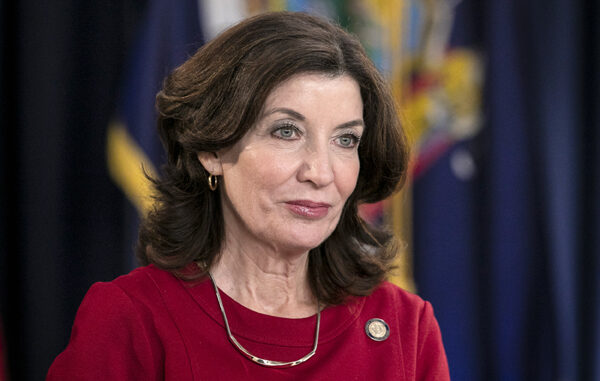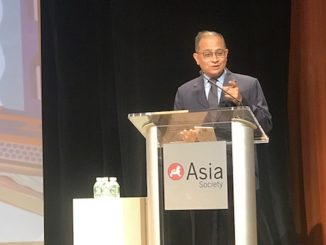
- New York State Doubles Investment to Expand Diversity Programs Managed by the Associated Medical Schools of New York and Serving More Than 800 Students
- About 20 percent of All Medical Students in New York now from the Black and Hispanic/Latino, Pacific Islander, and Native American Demographic
NEW YORK (TIP): Governor Kathy Hochul announced, on October 13, that the state has doubled its investment – committing more than $2.4 million – in diversity programs managed by the Associated Medical Schools of New York to help bring more traditionally unrepresented students to the physician workforce. Funded in part through the state Department of Health, these programs are designed to encourage students from backgrounds traditionally underrepresented in medicine – including those who are Black, Hispanic/Latino, Pacific Islander, or Native American – to get accepted into and complete medical school in New York.
“For far too long, communities of color in New York have faced disparities in their access to healthcare and have endured poorer health outcomes, both of which have resulted partially from their under-representation in the medical field,” Governor Hochul said. “By doubling our commitment to programs that champion diversity in medicine, we can ensure that our state’s healthcare workforce is more representative of our state’s population and help right historic wrongs.”
While more than 30 percent of the state’s population is Black or Hispanic, only 12 percent of physicians represent those demographics. Research has shown that patients seeing doctors from their own background have better health outcomes, which makes diversifying the state’s physician workforce imperative to improving the overall health of New Yorkers and addressing disparities.
New York State is now providing more than $2.4 million to diversity in medicine programs, which are designed to close gaps in the medical profession, doubling the funding commitment made last year. This funding is expected to serve more than 800 students through new and existing diversity initiatives, including Bridges to Medicine, AMSNY’s successful post-baccalaureate program at SUNY Downstate Health Sciences University. New York State Health Commissioner Dr. Mary T. Bassett discussed the importance of this commitment today during an event at SUNY Downstate, and how these programs are helping to build diversity at medical schools statewide. For the first time, about 20 percent of all medical students in New York are now from traditionally underrepresented populations, including Black and Hispanic/Latino, Pacific Islander and Native American backgrounds.
Department of Health Commissioner Dr. Mary Bassett said, “There are few things more important to our goals of improving health equity than the work of ensuring that the medical profession is as diverse as the New Yorkers they serve. Having a trusted voice and someone who understands the unique facets of your life experience can change a person’s understanding of their own health. This funding makes an investment in the people who make that a reality, and it will help for years to come by improving diversity, equity and inclusion to achieve better health outcomes for those who are traditionally underserved.”
Launched in 2017, the Bridges to Medicine is a year-long post-baccalaureate line of study designed to increase the representation of students from traditionally underrepresented and low socioeconomic backgrounds seeking admission into medical schools. Accredited as Master of Science in Physiology program in 2020, students participate in co-mingled classes as first-year medical students
Of the 57 medical students enrolled in Bridges to Medicine between 2017 and 2021, 88 percent were accepted into medical schools. In addition, six students from the program’s first cohort were matched to SUNY Downstate for their residencies.
In addition to Bridges to Medicine, the state’s investment is supporting new, innovative initiatives to ensure underrepresented students are prepared for medical school. The funding is supporting a program to encourage Black male athletes interested in entering medicine; MCAT preparation programs; research and physician shadowing opportunities; a web-based program to match students with faculty mentors; and community resources to help medical students with housing, nutritional resource, and other life skills, such as financial literacy. The increased funding is also supporting more students at AMSNY’s preexisting programs:
Post Baccalaureate Programs at Jacobs School of Medicine and Biomedical Sciences, University at Buffalo, SUNY; New York Medical College; Renaissance School of Medicine at Stony Brook University; Norton College of Medicine at Upstate Medical University.
Pathways to Careers in Medicine and Research Program at City College of New York.
Learning Resource Center at CUNY School of Medicine.
Associated Medical Schools of New York (AMSNY), a consortium of the 17 public and private medical schools in New York State, launched its first diversity pipeline programs in 1985 and has continually provided opportunities for underrepresented students to prepare for and enter medical school. The state Department of Health has provided funding for these programs since 2002 in an effort to help broaden the demographics of people entering the medical profession in New York.
Associated Medical Schools of New York President and CEO Jo Wiederhorn said, “The state Department of Health’s commitment represents a historic investment in the physician pipeline in New York State and will improve the diversity of the healthcare workforce. Our programs have shown results for over 35 years and now we will be able to really scale the impact. Over 94 percent of students in AMSNY’s four Post Baccalaureate programs, go on to medical school with approximately half going on to primary care specialties, often in underserved areas.” State University of New York Downstate President Dr. Wayne J. Riley said, “We are encouraged by the impact the Bridges to Medicine program has had on our students’ abilities to transition into their first year of medical school. In a community where the diversity is so great, in addition to providing quality healthcare, we are proud that our patients recognize and appreciate the reflection of their diverse and unique backgrounds. Our Bridges to Medicine Master’s program is a benefit to the students and an even greater benefit to the community.”
State Senator Jamaal T. Bailey said, “Diversity and representation in medicine is critical to addressing persistent racial health disparities. It is vital that our state continues to invest in programs like Bridges to Medicine that will not only provide opportunities for medical students of color but improve the health of our communities through increased access to quality, culturally competent care. Our communities deserve to have physicians they trust who understand their needs. I applaud Governor Kathy Hochul, Commissioner Mary Bassett, and the New York State Department of Health for their work to increase diversity in the medical field, create pathways to careers in medicine for communities of color, and inspire the next generation of healthcare leaders.”
Assemblymember Brian Cunningham said, “I express my gratitude to the New York State Department of Health and AMSNY for their visionary leadership and support for programs increasing diversity in medicine,” “We are fortunate to have many talented medical students and practitioners right at home in District 43, here at SUNY Downstate. Through this funding, not only are we enhancing medical services available in underserved areas like Brooklyn, but also providing incomparable opportunities to BIPOC students. These programs enable a diverse pool of medical students to pursue opportunities they might not otherwise have access to, so on behalf of myself and my constituents, I thank you.”
Assemblymember Pamela J. Hunter said, “I am immensely proud to have been the primary advocate in the Assembly for the funding of the Diversity in Medicine program for multiple state budgets. Increasing the diversity of our doctors and nurses leads to better health outcomes as we enable new practitioners in the medical field who are directly invested in their communities. I look forward to the expansion of these programs and the many benefits it will have for our medical students as well as their future patients.”





Be the first to comment